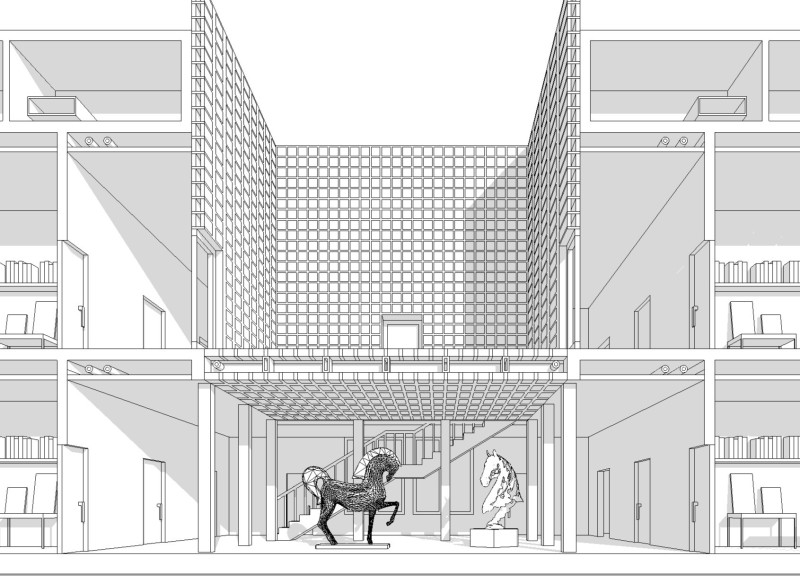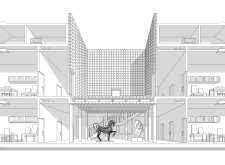5 key facts about this project
The Omuli Museum of the Horse is a dedicated space that honors the rich cultural heritage linked to horses. Located in a region that reflects this theme, the museum acts as both an exhibition venue and a cultural landmark. The design concept revolves around an open, multi-level layout that enhances visitor interaction and engagement while providing a platform for showcasing horse sculptures.
Spatial Organization
The architecture features a multi-level arrangement that encourages movement throughout the space. This organization allows for distinct areas that cater to different exhibits without imposing physical barriers. By prioritizing accessibility, the design promotes an immersive environment, inviting visitors to explore the narrative present in the museum.
Natural Light
A significant aspect of the design is the use of natural light, which is expertly incorporated through thoughtfully placed windows. This design choice illuminates the interior while creating a dynamic atmosphere that shifts with changing light. The interplay of light enhances the visual appeal of the museum, accentuating the sculptures and making the spaces feel alive.
Visitor Interaction
Attention to visitor interaction is a key focus of the design. The expansive open areas and clear sightlines create an inviting environment that encourages a connection between the artworks and the audience. This engagement is further supported by the layout, which allows for smooth circulation and a natural flow through the exhibits.
The emphasis on open spaces and natural light creates a carefully designed environment that highlights the art of equestrianism. Unique features, such as the arrangement of exhibition areas in relation to sunlight, enhance the experience and provide a deep appreciation for the sculptures on display.






















































